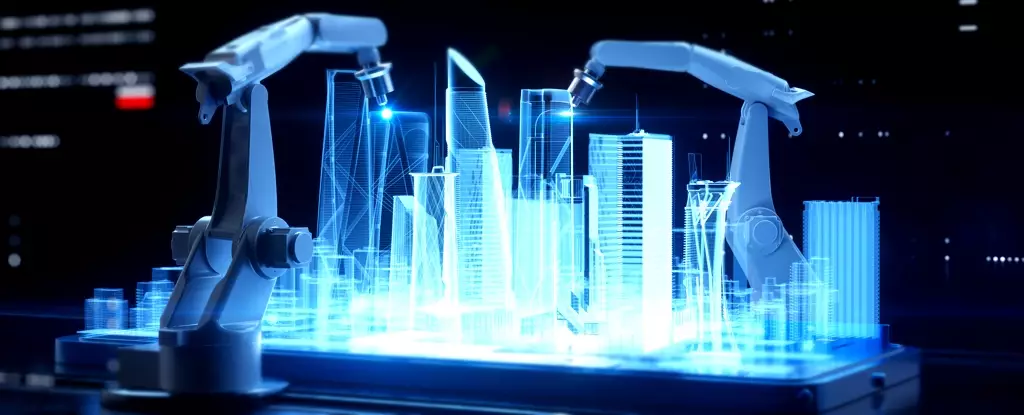In an ideal world, cities would be characterized by lush parks, interconnected footpaths, bike lanes, and an efficient public transport system that can whisk residents to their desired destinations within minutes. This utopian vision is at the heart of urban planning’s latest concept: the 15-minute city. The idea is to bring essential services and amenities within a 15-minute radius, creating healthier communities and reducing vehicle emissions. However, realizing this vision has proven to be a complex task, leading researchers at Tsinghua University in China to explore the potential of artificial intelligence (AI) in optimizing urban planning.
A recent study conducted by Yu Zheng and his colleagues at Tsinghua University demonstrated the ability of AI to generate more efficient spatial layouts for urban areas, surpassing human designs in terms of access to services, green spaces, and traffic levels. By automating the computational tasks of urban planning, AI can dramatically expedite the process and deliver superior results. Using machine learning and neural networks, Zheng and his team trained an AI model to design small urban areas encompassing a few square kilometers.
With its focus on the concept of the 15-minute city and adherence to local planning policies, the AI system developed by Zheng’s team quickly emerged as a promising solution to urban congestion and excessive concrete development. While presently limited to small-scale designs, the model’s scalability offers potential for larger urban areas. However, it is crucial to recognize that designing an entire city is an infinitely more intricate task. Zheng estimates that creating a neighborhood spanning 4×4 blocks would involve twice as many planning decisions as one covering 3×3 blocks.
Enhancing Efficiencies in Urban Planning
Despite the challenges of scaling up, even automating a few steps in the planning process can yield enormous time savings. The AI model developed by Zheng and his colleagues computed tasks that would typically take human planners 50 to 100 minutes in a matter of seconds. By streamlining these time-consuming aspects, urban planners are liberated to concentrate on more complex and human-centric tasks, such as public engagement and aesthetics. This collaborative approach, where AI serves as an assistant to human planners, allows for optimized designs generated by algorithms to be refined, adjusted, and evaluated based on community feedback.
This symbiotic relationship between AI and human expertise is essential to creating sustainable and thriving urban environments. As Paolo Santi, a research scientist at the Massachusetts Institute of Technology (MIT), emphasizes, urban planning entails more than just allocating spaces for buildings and parks. It is a holistic endeavor that aims to design places where communities can live, work, and interact harmoniously for generations to come.
Zheng and his colleagues conducted surveys of urban designers to assess the perception of AI-generated plans versus human creations. The results highlighted the potential of AI in certain spatial designs, garnering substantial support from survey participants. However, there were instances where the preference between AI and human planners was inconclusive. The true measure of success lies in implementing these plans and assessing tangible improvements in areas such as noise reduction, heat mitigation, pollution reduction, and public health enhancements.
Unlocking the Potential of AI-Assisted Urban Planning
While AI shows immense promise in revolutionizing urban planning, it is important to view it as a tool, rather than a replacement for human expertise. By leveraging the computational capabilities of AI, urban planners can reimagine city design, optimize efficiencies, and enhance the quality of life for residents. The collaborative potential between AI and human planners offers a unique opportunity to strike a balance between algorithmic precision and human ingenuity, paving the way for the cities of tomorrow.


Leave a Reply